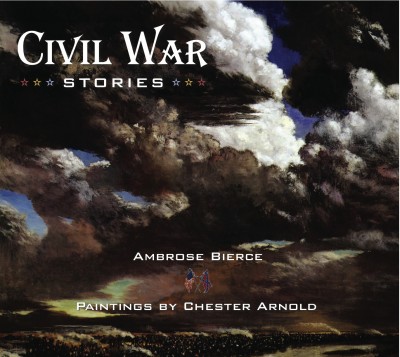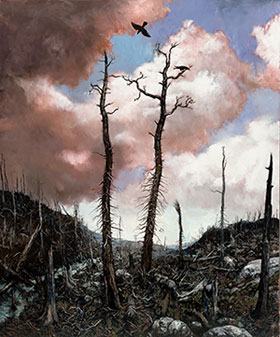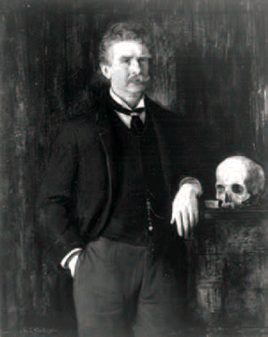
On the sesquicentennial of the Civil War, we proudly present a selection of Ambrose Bierce’s Civil War Stories, widely considered to be the finest fiction to come out of that war. Bierce’s stories pull no punches. Their objective realism is so effective that some commentators have described these tales as antiwar stories. In addition to a selection of Bierce’s fiction, we have included the author’s nonfiction masterpiece, “What I Saw at Shiloh.”
Ambrose Bierce enlisted for a three-month stint with the Union Army 150 years ago, only days after President Lincoln called for recruits. Bierce had just turned 19. He served nobly through the entire war, seeing action in many of its most brutal battles as a foot soldier and mapmaker.
Sonoma realist master Chester Arnold contributes a rich gallery of paintings to this collection. Although Arnold’s paintings bear no direct reference to the Civil War and were painted nearly a century and a half later, they share with Bierce a profound sense of the hollow devastation that human violence and desecration leave behind.
Excerpt from “What I Saw at Shiloh”
“O days when all the world was beautiful and strange; when unfamiliar constellations burned in the Southern midnights, and the mocking-bird poured out his heart in the moon-gilded magnolia; when there was something new under a new sun; will your fine, far memories ever cease to lay contrasting pictures athwart the harsher features of this later world, accentuating the ugliness of the longer and tamer life? Is it not strange that the phantoms of a blood-stained period have so airy a grace and look with so tender eyes?—that I recall with difficulty the danger and death and horrors of the time, and without effort all that was gracious and picturesque? Ah, Youth, there is no such wizard as thou! Give me but one touch of thine artist hand upon the dull canvas of the Present; gild for but one moment the drear and somber scenes of to-day, and I will willingly surrender another life than the one that I should have thrown away at Shiloh.” —from “What I Saw at Shiloh.”
This Civil War major’s depiction of war in these tales . . . constitute(s) the greatest anti-war document in American literature.” — Ernest Jerome Hopkins


